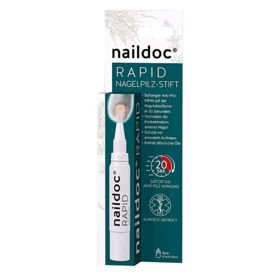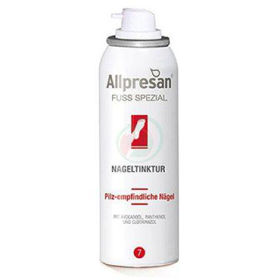Customer question:
Please ask for more information about fungal nail infections and the usefulness of using vinegar for fungus - a question from an anonymous customer
Pharmacist's answer:
Onychomycosis, or nail fungus, is a common nail infection and can affect several nails simultaneously. Fungal nail infections can affect up to 14% of the general population. Most fungal nail infections are not severe, but some people may feel pain during the fungal attack or may be bothered by the unpleasant appearance of the nails.
These nail infections can cause the nails to become discolored, thick, brittle, and cracked, and the nail can often separate from the nail bed.
Many different types of fungi cause fungal nail infections. Small cracks in your nail or the surrounding skin can allow these microorganisms to enter the depths of your nail and cause an infection. People with fungal infections of the toenails often also have a fungal infection of the skin on the foot area, especially between the toes - this is called athlete's foot or tinea pedis.
Some people are more likely to develop toenail fungus than others, including older adults and people with the following conditions:
- nail damage or foot deformity
- diabetes
- weakened immune system
- venous insufficiency or peripheral arterial disease
- fungal infections of the skin on other parts of the body
Using alcohol vinegar for nail fungus
Alcoholic vinegar is a commonly used remedy for treating fungal infections, but unfortunately, this kind of practice does not give encouraging results. The fact is that wine vinegar cannot penetrate under the nail, which means it cannot destroy the fungus.
Otherwise, the method is entirely safe, and you can try it yourself. Soak the affected foot in a mixture of one part vinegar and two parts warm water, and soak the toes in the solution for up to 20 minutes a day.
Below you can read some of the most common questions and answers about nail fungus:
What are the signs of nail fungus? - question from an anonymous customer
Symptoms of nail fungus include a nail or nails that are:
- thickened
- discolored
- brittle and breakable
- different forms
- separated from the nail bed
- unpleasant smell
Sometimes the skin around the nail may become infected, itchy, cracked, red, and swollen.
How can we prevent nail fungus? - question from an anonymous customer
Nail fungi prevail in a moist environment. Fungal spores will grow relatively well within the nail tissue, causing the nail to thicken over time and eventually separate from the nail bed. It is essential to take preventive measures to avoid these types of toenail problems.
You can protect your toenails in the following ways:
- wear acrylic socks instead of cotton to prevent moisture build-up
- incorporate the use of an antifungal powder into your daily routine
- wear breathable and suitable shoes (orthotic insoles and adapted shoes)
- wash your feet regularly
- smooth toenails with a file and trim sharp or uneven nails
- wear flip flops or any breathable form of footwear in public baths
- after leaving the bath, rinse the surface of the feet with colloidal silver
Can I use alcohol vinegar to treat toenail fungus? - question from an anonymous customer
Vinegar is a diluted form of acetic acid that is versatile and harmless. In mild forms of fungal infection of the nail or nails, soaking with alcoholic vinegar can provide positive results.
Care procedure for infected nails with alcohol vinegar:
1. Pedicure:
Before soaking your feet, treat yourself to a gentle home pedicure. Use tweezers to trim the nail as much as possible - this helps the vinegar reach the fungus more easily. Do not try to cut the nail beyond the area where the white part of the nail is located.
If you have trouble cutting your nails, try softening them by soaking them in a water bath. Disinfect scissors, tweezers, and files before and after a pedicure to avoid spreading the infection to other parts.
2. Soak your feet in a vinegar
bath
In a bowl, mix 1 cup (240 ml) of warm water and alcohol vinegar. The container should be large enough for your foot to rest comfortably. Mix the water and alcohol vinegar well. You can also use apple cider vinegar instead of alcohol vinegar.
Soak your foot for 10-20 minutes. Make sure the water covers the entire infected soil. If you have wounds or cuts on your leg, you may experience a burning sensation feeling, which does not represent danger.
3. Dry your feet
well
After finishing the treatment, dry the foot thoroughly. Fungus thrives in moist conditions, so always dry your feet immediately after soaking them. Take a clean towel and pat your feet dry before putting your shoes and socks back on. Please do not reuse this towel before washing it, as this could spread the fungus.
4. Repeat the irrigation twice a day
Toenail fungus is difficult to remove; treat yourself to a warm foot bath with vinegar and water daily. If you do not notice any improvement after a few weeks, see your doctor for further treatment or talk to your pharmacist.
Interesting reading: Nail fungus forum













